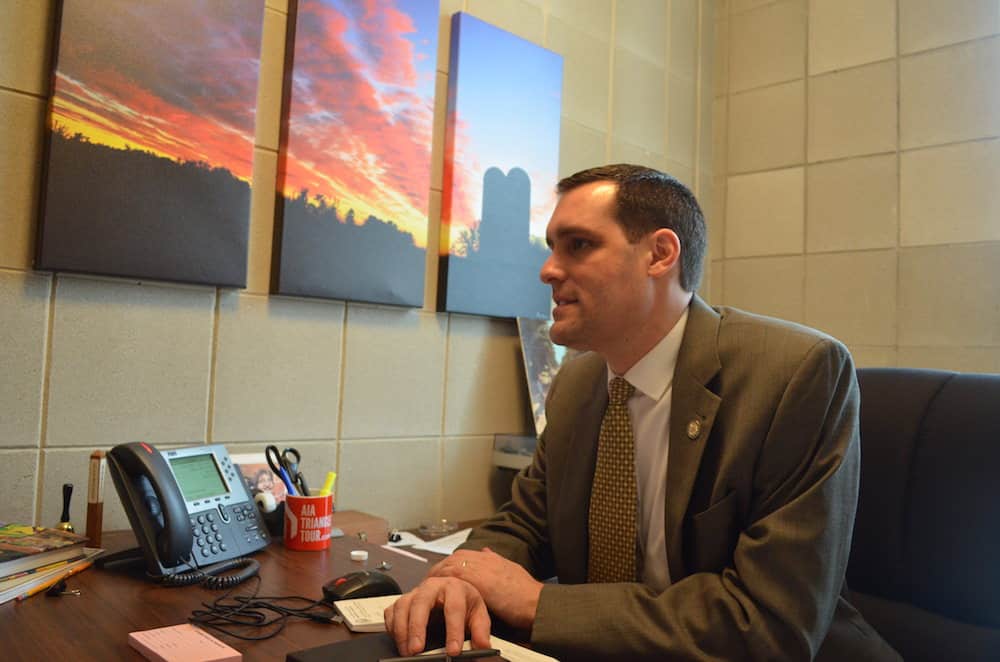

Editor’s Note: Graig Meyer is on a quest this session to find common ground among legislators for the benefit of our students. After a three-part series this week about his own quest for common ground, he is going to blog for EdNC about a bill with potential for common ground as it winds its way through the legislative process.
If North Carolina goes all the way down the road of implementing a full array of school choice policies – charter schools, vouchers, open enrollment, etc. – what should our policy be for fixing the public schools that still fail after all of these reforms are in place?
“What should our policy be for fixing failing public schools?”
That was the question that I asked a number of conservative education policy leaders and elected officials while I was at former Florida Governor Jeb Bush’s Excellence in Education annual summit. I had gone to the conference to try to find common ground with conservatives, and I learned a few things.
One of the things that struck me at the conference was the sincere interest that many of the attendees had in helping children from poor families and communities. I even talked to an old colleague from a high school where I used to work. He was among the most liberal teachers at the school back then. He told me that he had become a Republican because he was so frustrated with watching public schools struggle to educate poor children, and he had come to believe that the only solution was to give those children and their families more choices and options.
Conservatives have a rhetorical argument that is quite compelling even to me as a Democrat and a public school advocate. They ask, “Why should poor children be the only ones who have no choices about where they can go to school?” It’s a legitimate question. Children from families with means have lots of options, including high-quality public school magnet programs that require a little extra family involvement for enrollment and attendance.
Our public schools must continue to be a fundamental part of our approach for using public investment to enable private gain.
Unfortunately, most conference attendees couldn’t answer my question: “What should our policy be for fixing failing public schools?” I asked about a dozen conference attendees this question. Most didn’t have any answer.
One conference attendee, however, did offer a potential solution that avoided any type of government fix. She said “Maybe the parents in those schools can come together to figure out how to fix the school themselves.” I’m skeptical, because I don’t think parents struggling just to make ends meet are going to figure out how to fix their local school.
During a panel discussion, former Secretary of State Condoleeza Rice answered a similar question quite chillingly. “Yes, there are still going to be some kids who are going to be left in those schools.” So much for No Child Left Behind.
The more I talked to others about school choice ideology, the more unsettled I became. A fundamental aspect of that ideology is that it prefers market-based solutions to a shared responsibility for strong public schools. In this “every man for himself” approach, it is OK for an education system to produce winners and losers. Furthermore, if parents don’t choose to find a good school option for their children, it’s their fault and their responsibility to fix the system. If that doesn’t work, maybe the school should be shuttered and the school choice marketplace somehow will fill the void.
The best schools have solid nutrition programs and school-based health providers to help children meet their basic physical needs. Successful schools ensure all students have a challenging curriculum and provide teachers with ample time to work with the learners who struggle the most. Schools that eliminate racial achievement gaps help students build positive racial identities and engage parents in supporting their children’s education.
The basic flaw in this choice logic is the belief that people can choose to lift themselves out of poverty or to succeed in the face of systemic or structural inequalities. Throughout my career, I’ve helped hundreds of children from poor families of color go to college, and, yes, they had to make some very important decisions and taken tremendous responsibility for their own success. They also needed supportive environments that created fertile ground for their decisions and hard work to take root. Public schools are challenged to address social conditions (poverty, homelessness, broken families) over which they have very little control, yet children and families depend on their schools to help them move beyond those circumstances. Our public schools must continue to be a fundamental part of our approach for using public investment to enable private gain.
Neither traditional public schools nor choice options can guarantee success for every child, but we also know that poverty and systemic racial bias don’t have to be nails in an educational coffin. We actually know quite a bit about how to help schools that serve poor communities and close achievement gaps. The best schools have solid nutrition programs and school-based health providers to help children meet their basic physical needs. Successful schools ensure all students have a challenging curriculum and provide teachers with ample time to work with the learners who struggle the most. Schools that eliminate racial achievement gaps help students build positive racial identities and engage parents in supporting their children’s education.
Liberals and conservatives agree that all children need access to well-run schools with talented teachers, but we often disagree how to get there. The choice ideology leaves too much up to chance. I believe we need school opportunities designed to make poor children and their families feel supported and successful. Conservatives may have given up on the government’s ability to run high-performing schools, but I haven’t. I know those kids. I’m not giving up on them. We need policies that help every school be great and every child succeed.


